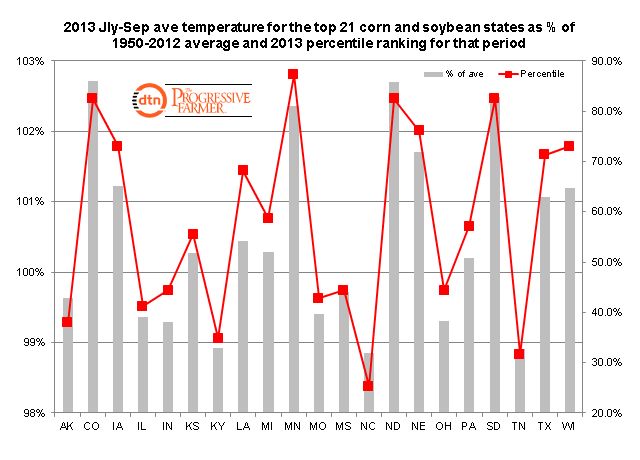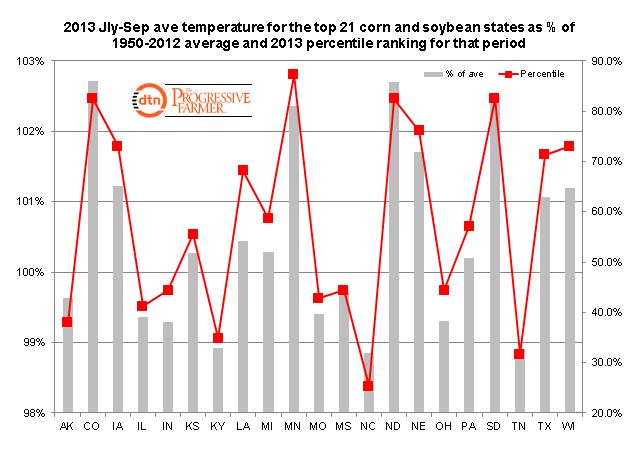Fundamentally Speaking
2013 Summer Temps in Top Corn, Bean States
In a prior piece, we looked at summer precipitation in the top 21 corn and soybean states and noted how some of the core Midwest states had a drier July-September period than even during last year’s mega-drought.
Here, summer temperatures are examined in these states for the July-September period as percent of the 1950-2012 average and how 2013 ranks in terms of percentile for the same timeframe.
P[L1] D[0x0] M[300x250] OOP[F] ADUNIT[] T[]
It appears that 12 states had summer temperatures above average and nine below though the above average temperatures were not nearly as extreme as witnessed a year ago.
North Carolina was the state with readings the furthest below normal as the 2013 July-September average was 98.9% of the 1950-2013 average and that resulted in a percentile ranking of 25.3% meaning that 2013 was in the lower quarter of average July-September readings since 1950.
We think one of the biggest weather benefits for U.S. row crops this year besides the very heavy spring rains that helped recharge subsoil moisture reserves were the warmer than normal summer temperatures in the Upper Midwest.
States such as Minnesota, North Dakota, South Dakota, and even Wisconsin saw July-September average temperatures rank in the top quarter of such readings posted since 1950.
This was of immense benefit to the corn and soybean corps that were planted late in that region of the country and needed above normal temperatures and a late fall freeze to allow the plants to reach full maturity and that is what happened.
A final observation is how the Eastern Corn Belt and Delta states had in addition to ample moisture this summer below average temperature that are contributing to record yields in this part of the country.
(KA)






Comments
To comment, please Log In or Join our Community .